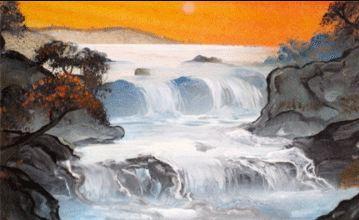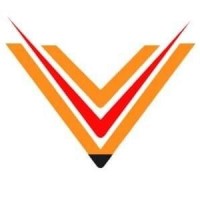Learn Airbrush Painting Types And Techniques

An airbrush is a
small, air-operated tool that sprays the paint and foundation by a process of
nebulization. Spray painting developed from the airbrush and is considered to
make use of a type of airbrush.
Types Of Airbrushes
Airbrushes are
generally classified by three characteristics. The first characteristic is the
action performed by the user to trigger the paint flow and the second is the mechanism for feeding the paint into the airbrush and the third is the step at
which the paint mix.
Trigger
The simplest
airbrushes work with a single-action mechanism where the depression of the
trigger activates air flow through the airbrush. The airbrush's color flow and
spray pattern are adjusted separately from the trigger actions. This is done
with an adjustment of the airbrush's needle placement within its paint tip, by
the turning of the paint tip on an external mix airbrush or a needle setting
dial on an internal mix airbrush. The color quantity and spray pattern are
maintained at a fixed level until the airbrush user re-adjust the setting.
Single-action airbrushes are easy to use and usually less expensive, but there
are some limitations of these airbrushes in applications in which the user
wishes to do something more artistic than simply apply a uniform coat of color.
Feed system
Paint can be fed by
gravity from a paint tank sitting atop the airbrush (called gravity feed) or
siphoned from a tank mounted below (bottom feed) or on the side (side-feed).
Each feed type carries exclusive advantages. Gravity feed instruments need less
air pressure for suction as the gravity pulls the paint into the mixing
chamber. Side and bottom-feed instruments are used to see over the top, with
the former sometimes offering left-handed and right-handed options to suit the
artist. A bottom-feed airbrush holds a larger capacity of paint than the other
types and is often preferable for larger scale work such as automotive
applications.
Mix point
With an external mix
the air and paint exit the airbrush before mixing with each other, this creates
a larger atomization pattern. This mix airbrushes are cheaper and suitable for
covering larger areas with more viscous paints or varnishes.
Airbrush Techniques
Airbrush technique
is the freehand management of the airbrush, air pressure and distance from the surface that is being sprayed. Airbrush techniques will differ with the type of
airbrush used (single-action or dual/double-action).
The double-action
airbrush technique contains depressing the trigger on the top of the airbrush
with the finger to discharge air only and drawing it back gradually to the
paint discharge threshold. The most important procedure is, always begin with
air only and end with air only.
In a single-action
airbrush technique, only one activity is required. The single action of
depressing the trigger discharges a fixed proportion of paint to air. The most
significant point of the single-action airbrush technique is to keep the hand
moving before the trigger is depressed and after the trigger is released.
To watch videos on how to use these techniques visit the website now!
Post Your Ad Here





Comments